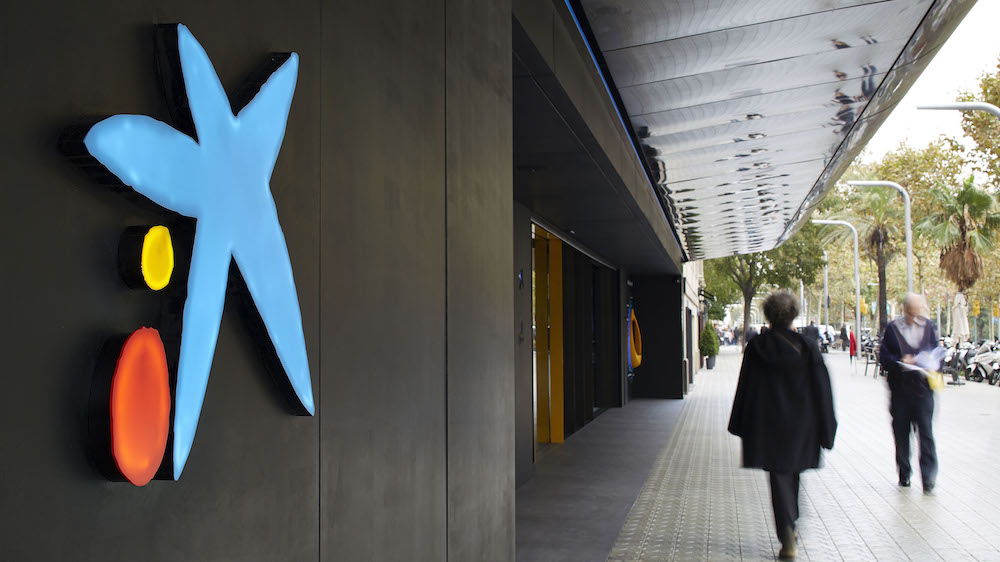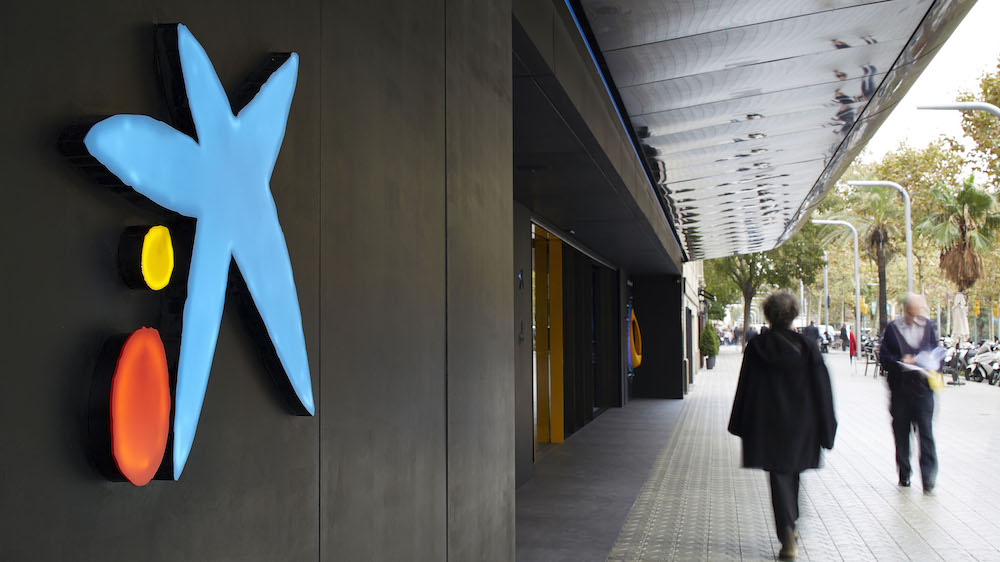
• The Bank has adapted a quantum algorithm to assess the capital at risk for financial assets such as mortgage and treasury bill portfolios.
• Quantum computing will help solve hugely complex tasks that are impossible to perform using traditional computing. It will also provide better solutions to the current optimisation issues.
CaixaBank has conducted the first real tests using a quantum computer in order to study the applications of this technology within the scope of risk analysis. The projects have been developed using IBM's Framework Opensource Qiskit, an infrastructure that includes a simulator and a 16-qubit quantum computer. This framework provides the scientific community with tools to develop and execute quantum algorithms.
The objective of this phase was to validate quantum computing's capacity to improve processes. The financial sector currently performs tasks that require enormous computational resources and that are carried out faster by implementing quantum computing. This is exactly what CaixaBank has been trying to test with the developed projects.
Specifically, CaixaBank has started a project aimed at performing risk analysis simulations on financial assets. The bank has implemented a quantum algorithm that is able to assess the financial risk of two portfolios -a mortgage portfolio and treasury bills portfolio- specifically created for the project using real data.
This work usually requires an enormous amount of time and resources. However, when applying the quantum algorithm to the risk analysis, we reach the same conclusions as the traditional method, but in much less time. Whereas the traditional method requires an enormous amount of simulations (around thousands or millions, depending on the case), when implementing the quantum algorithm, only around dozens of simulations are required.
In terms of time, it involves cutting down the complex work of several days to just a few minutes. The above-mentioned work has been encapsulated in the following paper: “Credit Risk Analysis using Quantum Computers” published in July 2019.
First bank in Spain to work with quantum computing
By developing these projects, CaixaBank has become the first bank in Spain, and one of the first in the world, to incorporate quantum computing into their R&D activity.
Although we may still have to wait for the first commercial applications of quantum computing to see the light, it is crucial that we spend time assessing the potential use of quantum computing in the various financial business areas, as well as in generating the required capacities to undertake any future projects, before it becomes a reality.
CaixaBank currently has a team dedicated to innovation within this field whose members have varied profiles and work on the Bank's different capacities in a multidisciplinary way. Having successfully completed this first test, the Bank is working on exploring the use of this technology applied to optimisation algorithms, machine learning and secure encryption methods.
Ongoing commitment towards emerging and pioneering technologies
CaixaBank continually invests in new technology in order to satisfy customer demands, guarantee growth, adapt to emerging business needs and provide access to information around the clock. As a result, it ensures a total adaptation of the infrastructure to the needs of financial management and customer services ,guaranteeing total security.
This involves an ongoing commitment towards emerging and pioneering technologies, spanning from blockchain to robotics and including artificial intelligence.
CaixaBank's continued interest in digital transformation throughout its history has provided it with the largest digital customer base in Spain (6.3 million). In addition, CaixaBank has developed projects that have marked technological turning points in the sector, such as the creation of the first cash machines that allow customers to perform operations through facial recognition and without having to enter their PIN.
Thanks to this strategy, CaixaBank has become one of the highest-rated banks in the world based on the quality of its digital products and services. In 2019, the bank was recognised as the “Most Innovative Bank in Western Europe” by the US magazine Global Finance. It has also been acknowledged as the Best Private banking institution in the world for its digital client communication at the Wealth Tech Awards held by the PWM magazine of the Financial Times group.
In 2018 the bank was chosen as the “Best Digital Bank in Western Europe” by the publication Euromoney; and its mobile banking application, CaixaBankNow, was recognised by the Bank Administration Institute (BAI) and by the British magazine The Banker as the mobile technological project in the 2018 Tech Project Awards.
For the coming years, CaixaBank views innovation as a strategic challenge and a hallmark of its culture. The bank's 2019-2021 Strategic Plan sets an ambitious target of accelerating the digital transformation so as to help the Group become more customer oriented and adapt better to new customer habits and behaviours.
• Quantum computing will help solve hugely complex tasks that are impossible to perform using traditional computing. It will also provide better solutions to the current optimisation issues.
CaixaBank has conducted the first real tests using a quantum computer in order to study the applications of this technology within the scope of risk analysis. The projects have been developed using IBM's Framework Opensource Qiskit, an infrastructure that includes a simulator and a 16-qubit quantum computer. This framework provides the scientific community with tools to develop and execute quantum algorithms.
The objective of this phase was to validate quantum computing's capacity to improve processes. The financial sector currently performs tasks that require enormous computational resources and that are carried out faster by implementing quantum computing. This is exactly what CaixaBank has been trying to test with the developed projects.
Specifically, CaixaBank has started a project aimed at performing risk analysis simulations on financial assets. The bank has implemented a quantum algorithm that is able to assess the financial risk of two portfolios -a mortgage portfolio and treasury bills portfolio- specifically created for the project using real data.
This work usually requires an enormous amount of time and resources. However, when applying the quantum algorithm to the risk analysis, we reach the same conclusions as the traditional method, but in much less time. Whereas the traditional method requires an enormous amount of simulations (around thousands or millions, depending on the case), when implementing the quantum algorithm, only around dozens of simulations are required.
In terms of time, it involves cutting down the complex work of several days to just a few minutes. The above-mentioned work has been encapsulated in the following paper: “Credit Risk Analysis using Quantum Computers” published in July 2019.
First bank in Spain to work with quantum computing
By developing these projects, CaixaBank has become the first bank in Spain, and one of the first in the world, to incorporate quantum computing into their R&D activity.
Although we may still have to wait for the first commercial applications of quantum computing to see the light, it is crucial that we spend time assessing the potential use of quantum computing in the various financial business areas, as well as in generating the required capacities to undertake any future projects, before it becomes a reality.
CaixaBank currently has a team dedicated to innovation within this field whose members have varied profiles and work on the Bank's different capacities in a multidisciplinary way. Having successfully completed this first test, the Bank is working on exploring the use of this technology applied to optimisation algorithms, machine learning and secure encryption methods.
Ongoing commitment towards emerging and pioneering technologies
CaixaBank continually invests in new technology in order to satisfy customer demands, guarantee growth, adapt to emerging business needs and provide access to information around the clock. As a result, it ensures a total adaptation of the infrastructure to the needs of financial management and customer services ,guaranteeing total security.
This involves an ongoing commitment towards emerging and pioneering technologies, spanning from blockchain to robotics and including artificial intelligence.
CaixaBank's continued interest in digital transformation throughout its history has provided it with the largest digital customer base in Spain (6.3 million). In addition, CaixaBank has developed projects that have marked technological turning points in the sector, such as the creation of the first cash machines that allow customers to perform operations through facial recognition and without having to enter their PIN.
Thanks to this strategy, CaixaBank has become one of the highest-rated banks in the world based on the quality of its digital products and services. In 2019, the bank was recognised as the “Most Innovative Bank in Western Europe” by the US magazine Global Finance. It has also been acknowledged as the Best Private banking institution in the world for its digital client communication at the Wealth Tech Awards held by the PWM magazine of the Financial Times group.
In 2018 the bank was chosen as the “Best Digital Bank in Western Europe” by the publication Euromoney; and its mobile banking application, CaixaBankNow, was recognised by the Bank Administration Institute (BAI) and by the British magazine The Banker as the mobile technological project in the 2018 Tech Project Awards.
For the coming years, CaixaBank views innovation as a strategic challenge and a hallmark of its culture. The bank's 2019-2021 Strategic Plan sets an ambitious target of accelerating the digital transformation so as to help the Group become more customer oriented and adapt better to new customer habits and behaviours.




 IonQ Achieves Industry Leading Performance on Next Generation Barium Qubits
IonQ Achieves Industry Leading Performance on Next Generation Barium Qubits